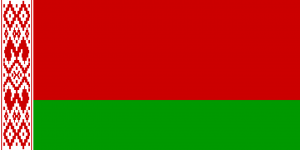Language/Belarusian/Grammar/How-to-Use-Have
Hi Belarusian learners! 😊
In this lesson, we will cover how to use "have" in the Belarusian language. This is an important topic for people who are learning the language as it will help to expand their communication skills. We will discuss how to use "have" in both present and past tense.
Don't miss the chance to check out these pages as you wrap up this lesson: Comparatives & Prepositions.
Basic Forms of "Have"[edit | edit source]
"Have" in Belarusian is "мець" (mietc'). This verb is used in the present tense to indicate possession or ownership. We can also use it to talk about an action that happened in the past. In this case, the verb will be in the past tense, "меў" (mieŭ).
When we use "have" to talk about possession or ownership, we need to know the basic forms, which can be seen in the table below:
| Belarusian | Pronunciation | English |
|---|---|---|
| Мець | mietc' | Have |
| Маю | maju | I have |
| Маеш | maeš | You have (singular) |
| Мае | mae | He/She/It has |
| Маем | miajem | We have |
| Маеце | maecie | You have (plural) |
| Маюць | majoŭ | They have |
Let's see some examples to better understand the usage of "have" for possession or ownership:
- Person 1: Я маю кнігу. (Ja maju knihu.) (I have a book)
- Person 2: Я маю кнігу ад тваёй сям'і. (Ja maju knihu ad tvaioj siam'i.) (I have a book from your family)
In the first example, "маю" (maju) is used to indicate possession of "кнігу" (knihu) which means book in Belarusian. In the second example, "маю" (maju) is again used to indicate the possession of "кнігу" (knihu), but this time the book is from "тваёй сям'і" (tvaioj siam'i) which means "your family".
Past Tense Forms of "Have"[edit | edit source]
We use "меў" (mieŭ) to talk about an action that happened in the past. The table below shows the basic forms of "меў" (mieŭ):
| Belarusian | Pronunciation | English |
|---|---|---|
| Меў/мела/мела | mieŭ/mieła/mieła | Had (masculine/feminine/neuter) |
| Мелі | meli | Had (plural) |
| Меў | mieŭ | Had (masculine singular) |
Here are some examples to demonstrate the use of "меў" (mieŭ) in past tense:
- Person 1: У мяне быў дом у Беларусі. (U miane byŭ dom u Bielarusi) (I had a house in Belarus)
- Person 2: Адкуль ты меў гэты дах? (Adkul' ty mieŭ hetы dakh?) (Where did you get that roof?)
In the above dialogue, we see that "быў" (byŭ) is used to indicate that the house was in the past, and "меў" (mieŭ) is used to indicate that the person had a house.
Additional Uses of "Have"[edit | edit source]
In addition to indicating possession or ownership, we can also use "have" to express certain actions or states. Here are some examples:
| Belarusian | Pronunciation | English |
|---|---|---|
| Я маю радасць. | Ja maju radasć' | I am happy (literally, "I have joy") |
| Ён мае падарунак. | Jon mae padarunak | He has a gift |
| Я маю спадзяванні. | Ja maju spadzian'ni | I have hopes (literally, "I have hope") |
In the above examples, we see that "have" is used to indicate a state of being, such as being happy or having hope. It can also be used to indicate the presence of an object, such as a gift.
Practice Exercises[edit | edit source]
To improve your skills using "have" in Belarusian, try translating the following sentences:
- I have two sisters.
- They had a dog last year.
- We have a lot of work to do.
Conclusion[edit | edit source]
In this lesson, we have learned how to use "have" in the Belarusian language. We have seen that "мець" (mietc') is used in the present tense to indicate possession, and "меў" (mieŭ) is used in the past tense to indicate an action that happened in the past. In addition to possession or ownership, "have" can also be used to express a state of being or to indicate the presence of an object. Remember to practice these forms in your everyday life, and you will soon see a difference in your communication skills.
To further improve your Belarusian Grammar, you can use the Polyglot Club website. Find native speakers and ask them any questions!
➡ If you have any questions, please ask them in the comments section below.
➡ Feel free to edit this wiki page if you think it can be improved. 😎
With this lesson finished, you may want to explore these additional pages: Personal Pronouns & Prepositional Case.
Other Lessons[edit | edit source]
Sources[edit | edit source]

